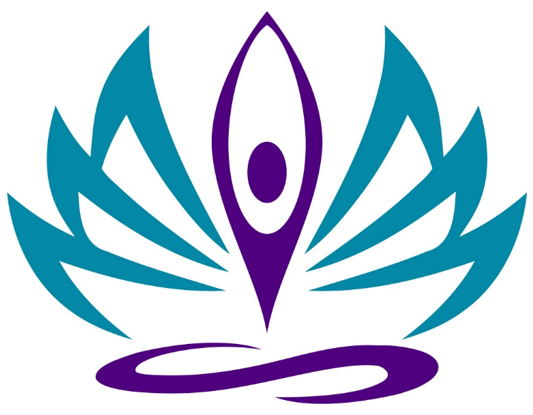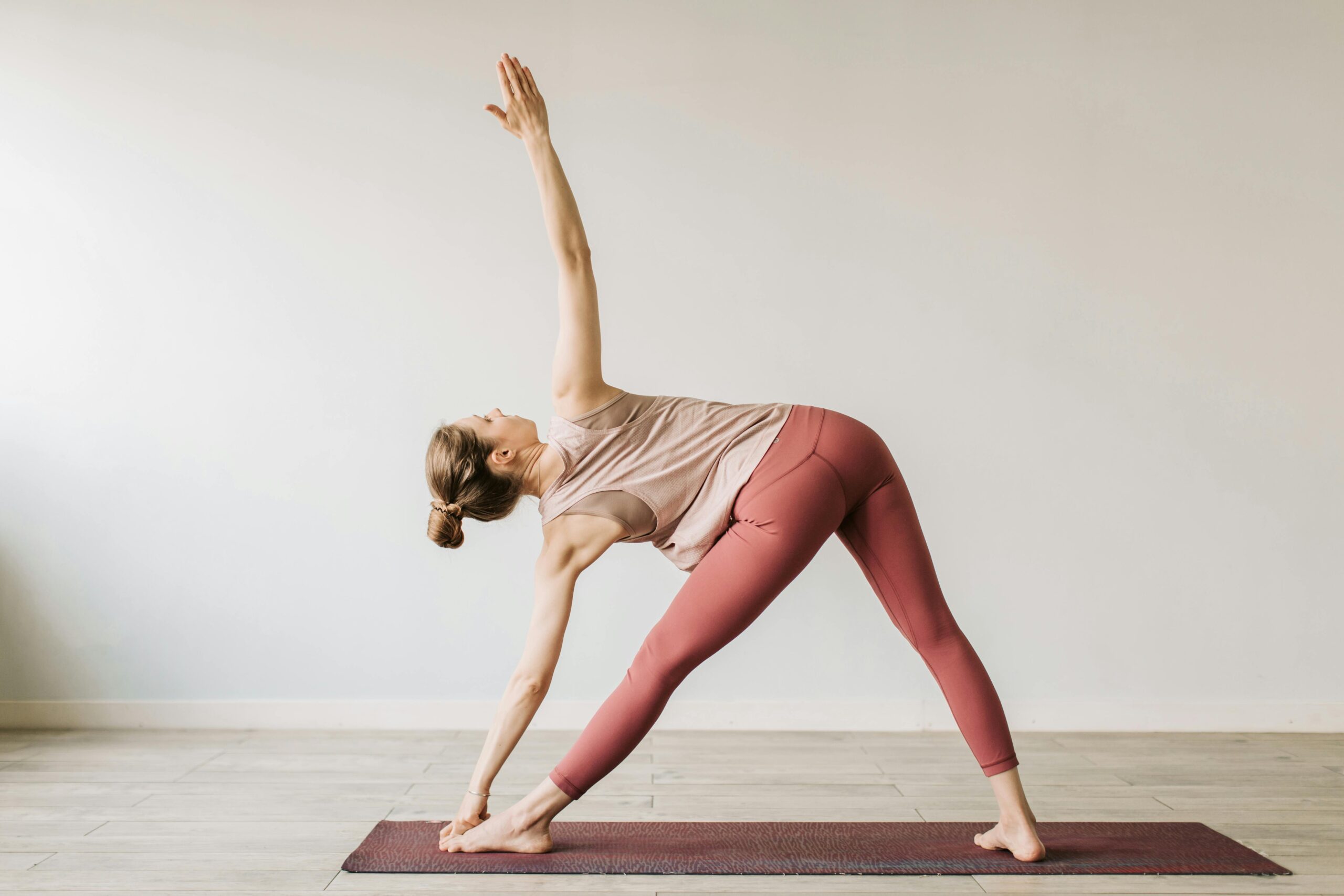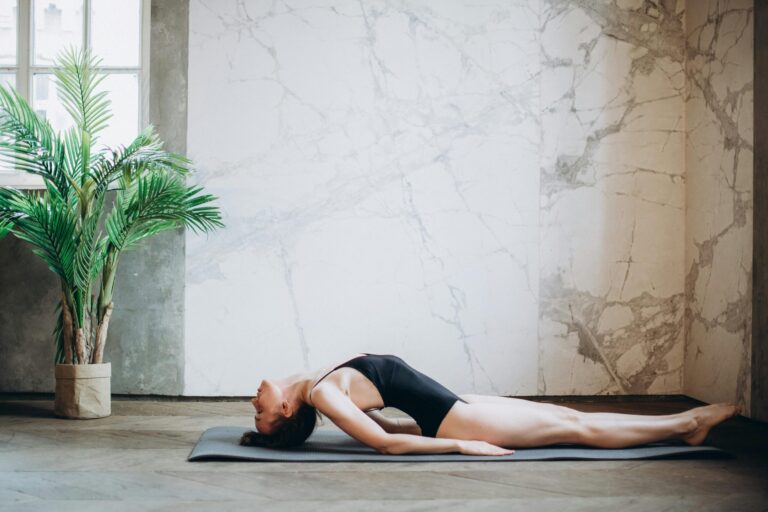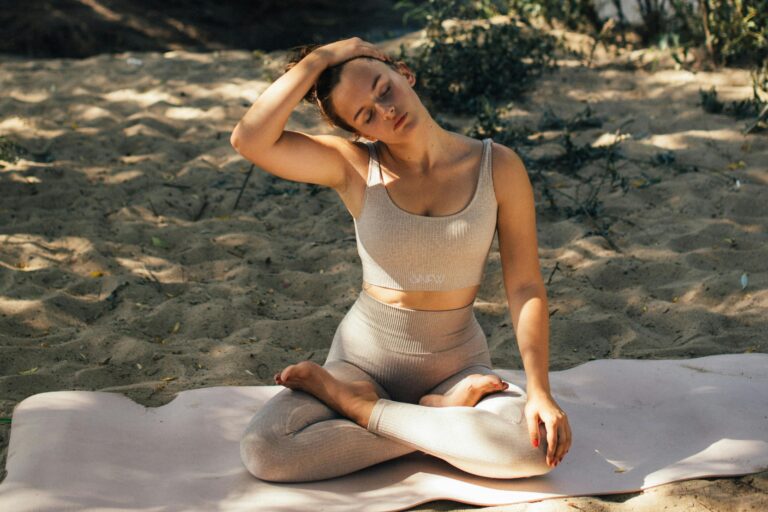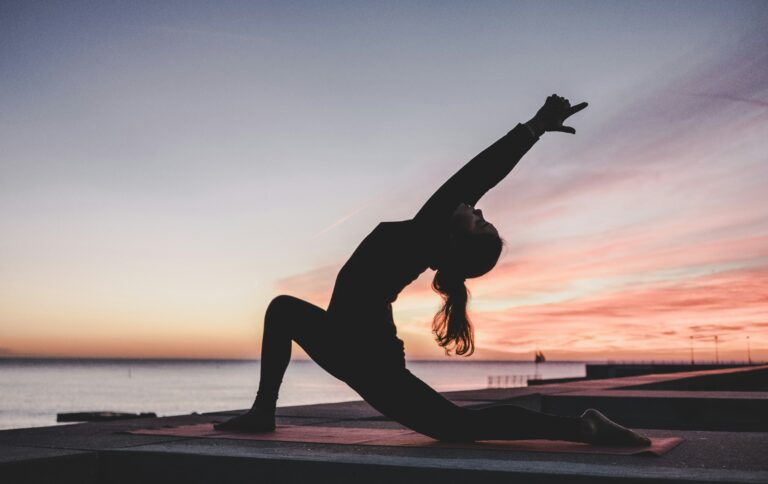Parivrtta Trikonasana with a difference: why lifting the back foot really moves your hips
Parivrtta Trikonasana - the twisted triangle - is one of the classic postures in yoga. It is taught in many classes as a powerful pose for stretching the back of the legs and mobilizing the spine. The back leg is usually actively stretched, the foot slightly turned out and firmly grounded.
But what if this alignment limits your mobility rather than promoting it? In this article, I'll show you an alternative variation of the posture in which you can use the back foot lift - and thereby specifically Inward rotation/internal rotation in the pelvis train. A variation that often makes more sense biomechanically than the classic version.
Why we often take evasive action in the classic version
In the traditional Parivrtta Trikonasana, the back foot is turned slightly outwards and the pelvis is opened slightly at the same time. This twist automatically creates a Outward rotation/outside rotation into the back leg - and therefore also into the pelvis. This often looks aesthetically "coherent", but rarely helps to build up a real rotation from the center of the body.
Most people, especially long-time yoga practitioners, already bring a lot to the table anyway. Away rotation due to the many asanas that promote this movement in the pelvis. What almost all yogis (and adults in general) lack is the ability to Internal rotation. However, this is rarely practiced - especially not in classical yoga.
If you simply want to improve your internal rotation skills while you relax, watch the following video:
Why internal rotation in the pelvis is so important
From a biomechanical perspective, the pelvis is the key to healthy alignment and rotation in the spine. If pelvic mobility is reduced, the entire body's mobility and statics suffer:
- The legs and feet begin to make evasive movements with each step.
- The lumbar vertebrae are compressed and lose mobility.
- Unfavorable tension patterns (e.g. hollow back/round back) develop or, in other words, are reinforced
- Asymmetries are reinforced and additional movements are limited as a result.
By working specifically on the Internal rotation of the pelvis in yoga workyou help your entire body to achieve greater mobility and better posture.
The modified version: Parivrtta Trikonasana with the back foot raised
This variation promotes internal rotation on both sides of the pelvis. This variation is a great addition to your yoga practice or your yoga class. This is how it works:
This is how you get into the posture:
- Preparation:
Stand with your feet hip-width apart and place one block at a time in the highest position on the outside of your ankles
- Starting position:
Now place your left leg stretched out approx. 1 m backwards and hold the Rear heel raised.
- Forward bend:
Bring your hands to your hips and slowly come forward into a forward bend as you exhale. You should only feel a slight stretch in the back of your thighs, come halfway down at most. Hold here for a moment. - Alignment:
Align the pelvis straight - make sure that the left pelvic blade does not point towards the right. outwards/backwards, but actively pulls inwards/forwards.
- Building up the internal rotation:
- Gently release your hands and place them on your blocks. Then allow yourself to bend your front right leg slightly and pull your belly button in a little to round your lower back. This may lower your heel to the floor at the back, which is fine.
- Now pull the heel back on the right (front leg) to activate the back of the thigh on the right and at the same time orient the right side of the pelvis backwards. Ground the ball of the right big toe well.
- Then bring the left side of the pelvis as far forward as you can.
- Rotation:
Place your left hand on the right block and turn your upper body towards the sky. Then raise your right arm upwards. Keep your back slightly rounded and your front leg slightly bent.
- Breathe & hold:
Hold the position for 4-6 deep breaths, without tension in the face or neck. Then change sides.
Important: This variant requires Less ambition, more sensitivity. It's not about "turning low" or "turning wide", but about where the movement really comes from. Consciously feel the difference to classic alignment.
I have recorded a 90-minute yoga class in which we practiced this variation intensively and felt the comparison to the regular Parivrtta Trikonasana. You can watch it here:
Für wen ist diese Variante sinnvoll?
Diese Haltung eignet sich besonders für:
- Menschen, die oft mit Rückenschmerzen oder ISG-Beschwerden kämpfen
- Yogis, die ihren Körper funktioneller verstehen und bewegen möchten
- Alle, die an ihrer Rotationsfähigkeit arbeiten möchten – vor allem im Becken und in der Brustwirbelsäule
Fazit: Weniger ist mehr – und oft gesünder
Parivrtta Trikonasana mit angehobenem hinterem Fuß und “gedrehtem” Becken mag ungewohnt wirken – aber genau deshalb ist diese Asana-Variation so wertvoll. Sie bringt dich raus aus alten Bewegungsmustern und hinein in neue Bewegungsmöglichkeiten.
Die bewusste Arbeit an der Innenrotation ist ein Schlüssel für mehr Stabilität, mehr Beweglichkeit – und weniger Kompensation. Eine Einladung, tiefer zu spüren, statt nur „tiefer zu kommen“ und deinem gesamten Körper etwas Gutes zu tun.
Lust, das direkt auszuprobieren?
In meinen Kursen und Videos findest du viele Variationen von klassischen Yogaübungen – immer mit dem Blick auf Funktionalität, Biomechanik und gesunde Ausrichtung.
➡️ Hier findest du mehr Erklärungen zu Stehhaltungen
